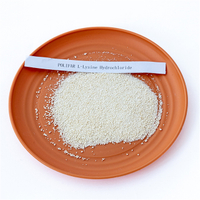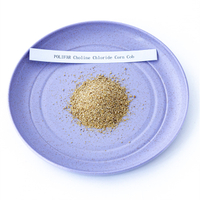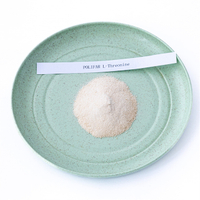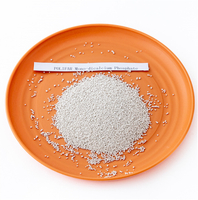| Availability: | |||||||||
|---|---|---|---|---|---|---|---|---|---|
| Color: White crystalline powder Sales Models: wholesale Min Order: 500kg Shelf Life: Two years when properly stored Packing: Net 25kg/drum or 25kg/bag Storage: stockpiled at the ventilated place, avoiding rain, moisture and insolation. Please handle with care to prevent bag damage, store away from toxic substances. | |||||||||
Assay/%:98.5~101.5
POLIFAR
2922491990
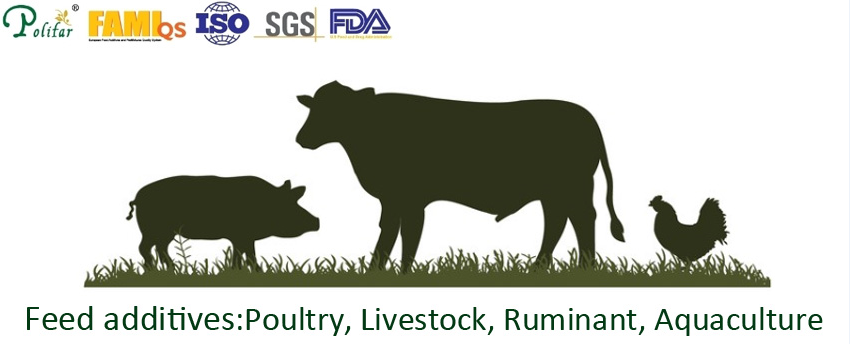
| CAS No.: | 56-40-6 | Other Names: | Glycine feed grade |
| Molecular formula: | C2H5NO2 | EINECS No.: | 200-272-2 |
| Place of Origin: | China | Type: | Feed grade amino acid |
| Efficacy: | promote growth | Brand Name: | Polifar |
| Model Number: | Feed additives | Appearance: | White powder |
| Shelf Life: | 2 years | MOQ: | 1000kg |
| Sample: | Free,≤500g |
【Product performance】:
Glycine is mainly used as an additive and attractant to increase amino acids in feeds eaten by poultry, livestock and poultry, especially pets. Used as a hydrolyzed protein additive, as a synergist for hydrolyzed protein. Glycine is an essential amino acid for chickens, because although chickens can synthesize glycine, its synthesis rate cannot meet the growth needs of chickens. Therefore, when the glycine content of the protein in the chicken diet is low, additional glycine has the effect of promoting the growth of the chicken. When used in feed additives, glycine is not only the main nutrient component of livestock and poultry feed, but also can prevent the oxidative deterioration of the feed and prolong the fresh-keeping period of the feed.
Glycine has the following uses in the food industry:
1.Nutritional supplements.
2.Mainly used for seasoning,it can buffer the taste of salt and vinegar, and the addition amount is 0.3% to 0.7% for salted products and 0.05% to 0.5% for pickled products;according to GB2760-96 regulations, it can be used as spice.
3.It has a certain inhibitory effect on the reproduction of Bacillus subtilis and Escherichia coli. Therefore, it can be used as a preservative for surimi products, peanut butter, etc., with an addition amount of 1% to 2%;
4.Antioxidant effect (using its metal chelation effect) added to cream, cheese and margarine can prolong the shelf life by 3 to 4 times;
5.To stabilize lard in baked goods, 2.5% glucose and 0.5% glycine can be added;add 0.1% to 0.5% to the wheat flour used for quick-cooking noodles, which can also play a seasoning role.

| CAS No.: | 56-40-6 | Other Names: | Glycine feed grade |
| Molecular formula: | C2H5NO2 | EINECS No.: | 200-272-2 |
| Place of Origin: | China | Type: | Feed grade amino acid |
| Efficacy: | promote growth | Brand Name: | Polifar |
| Model Number: | Feed additives | Appearance: | White powder |
| Shelf Life: | 2 years | MOQ: | 1000kg |
| Sample: | Free,≤500g |
【Product performance】:
Glycine is mainly used as an additive and attractant to increase amino acids in feeds eaten by poultry, livestock and poultry, especially pets. Used as a hydrolyzed protein additive, as a synergist for hydrolyzed protein. Glycine is an essential amino acid for chickens, because although chickens can synthesize glycine, its synthesis rate cannot meet the growth needs of chickens. Therefore, when the glycine content of the protein in the chicken diet is low, additional glycine has the effect of promoting the growth of the chicken. When used in feed additives, glycine is not only the main nutrient component of livestock and poultry feed, but also can prevent the oxidative deterioration of the feed and prolong the fresh-keeping period of the feed.
Glycine has the following uses in the food industry:
1.Nutritional supplements.
2.Mainly used for seasoning,it can buffer the taste of salt and vinegar, and the addition amount is 0.3% to 0.7% for salted products and 0.05% to 0.5% for pickled products;according to GB2760-96 regulations, it can be used as spice.
3.It has a certain inhibitory effect on the reproduction of Bacillus subtilis and Escherichia coli. Therefore, it can be used as a preservative for surimi products, peanut butter, etc., with an addition amount of 1% to 2%;
4.Antioxidant effect (using its metal chelation effect) added to cream, cheese and margarine can prolong the shelf life by 3 to 4 times;
5.To stabilize lard in baked goods, 2.5% glucose and 0.5% glycine can be added;add 0.1% to 0.5% to the wheat flour used for quick-cooking noodles, which can also play a seasoning role.
Testing Item | Standard | Result |
Appearance | White crystalline powder | conforms |
Assay/% | 98.5~101.5 | 99.5 |
Identification | Ninhydrin | conforms |
Chloride(as Cl)/% | ≤0.007 | <0.007 |
Sulphate(as SO4)/% | ≤0.0065 | <0.0065 |
Heavy metals (as Pb)/% | ≤0.002 | <0.001 |
Loss on drying/% | ≤0.2 | 0.10 |
Residue on ignition/% | ≤0.1 | 0.04 |
Testing Item | Standard | Result |
Appearance | White crystalline powder | conforms |
Assay/% | 98.5~101.5 | 99.5 |
Identification | Ninhydrin | conforms |
Chloride(as Cl)/% | ≤0.007 | <0.007 |
Sulphate(as SO4)/% | ≤0.0065 | <0.0065 |
Heavy metals (as Pb)/% | ≤0.002 | <0.001 |
Loss on drying/% | ≤0.2 | 0.10 |
Residue on ignition/% | ≤0.1 | 0.04 |
| Product Storage: | Stockpiled at the ventilated place, avoiding rain, moisture and insolation. Please handle with care to prevent bag damage, store away from toxic substances. |
| Product Packaging: | Net 25kg/drum or 25kg/bag |
| Loading: | 22MT/20FCL' ; 20MT/20FCL' with pallets |
| Delivery: | About 1 - 2 week |
| Product Storage: | Stockpiled at the ventilated place, avoiding rain, moisture and insolation. Please handle with care to prevent bag damage, store away from toxic substances. |
| Product Packaging: | Net 25kg/drum or 25kg/bag |
| Loading: | 22MT/20FCL' ; 20MT/20FCL' with pallets |
| Delivery: | About 1 - 2 week |
Q1: What is feed grade glycine?
A1: Feed grade glycine is a specific grade of glycine specifically used in animal feed as a nutritional supplement. It is usually produced through processes such as synthesis or fermentation to ensure its purity and quality meet the requirements for addition to animal feed.
Q2: What is the application scope of feed grade glycine?
A2: Feed grade glycine is suitable for various animals, including poultry, cattle, pigs and aquatic animals, to help optimize feed formula and improve animal growth performance and production efficiency.
Q1: What is feed grade glycine?
A1: Feed grade glycine is a specific grade of glycine specifically used in animal feed as a nutritional supplement. It is usually produced through processes such as synthesis or fermentation to ensure its purity and quality meet the requirements for addition to animal feed.
Q2: What is the application scope of feed grade glycine?
A2: Feed grade glycine is suitable for various animals, including poultry, cattle, pigs and aquatic animals, to help optimize feed formula and improve animal growth performance and production efficiency.





